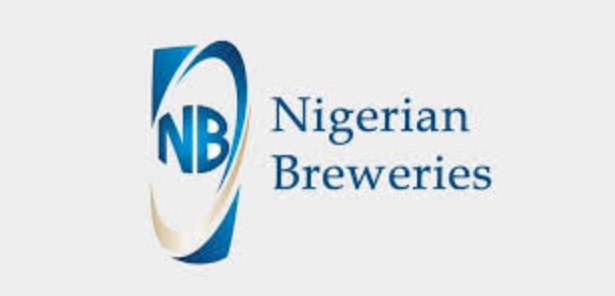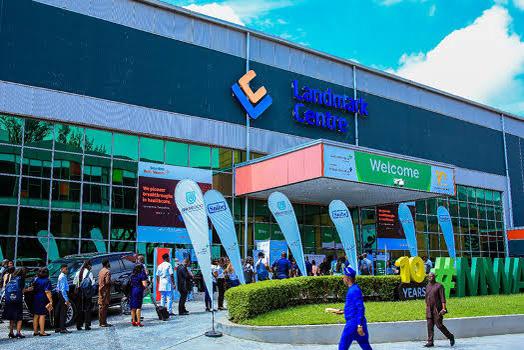In the competitive landscape of the business world, the most successful businesses are those that are able to successfully navigate the nuances and intricacies of today’s ever-evolving digital world to meet the needs of their target market. The more these brands continue to adapt and evolve, the longer they can remain relevant and successful. So, what makes a successful business?
Success in the business context can be measured in different areas—impact, industry positioning, sentiment, and so on. However, numbers play a significant role in determining the growth and sustenance of a business across all metrics. A sustainable business must constantly show progression in its financials, year on year irrespective of the economic fluctuations. The ability to navigate economic fluctuations shows how resilient a business is and how ready it is to face future challenges.
A deep look at Wema Bank’s growth trajectory in the past decade not only reflects an innovative brand but also a resilient bank that has transitioned through several faces of Nigeria’s economy and consistently stood strong year on year. No wonder the bank is referred to as Nigeria’s foremost innovative bank.
In truth, the model brands for business success should be the brands that survived the different phases of the information age and digital revolution, and remain relevant in today’s world. We’ve seen brands go extinct over the years because they got left behind while the world evolved. While it is almost expected that brands that existed before the internet’s influence would deteriorate as the digital evolution proliferates, a select few organisations have shown that it is not impossible to adapt to changing times and continue meeting the needs of customers. Wema Bank is one of these such outstanding brands that have not only weathered the storms but successfully stayed ahead of the curve, consistently exceeding expectations, and becoming increasingly successful with each year.
In its recently released 2023 Audited Financial Result, Wema Bank, Nigeria’s most innovative bank and pioneer of Africa’s first fully digital bank, ALAT, recorded outstanding results across the different metrics considered, achieving unprecedented financial growth and perhaps the best financial performance ever recorded. For a brand that dates as far back as the 1950s, topping the positive financial trends chart this deep into the 21st century is applaudable and in view of the Bank’s progression over the years, this success will undoubtedly spiral as the bank grows. So how do you measure a business’ growth or success?
Perhaps the most telling indicator of a business’ success is its profit—again, not just in the volume but more importantly, in the progression. Profit is simply the amount of money a business has earned beyond its cost. It’s the money made after accounting for operational cost and other expenses. The most successful businesses are those that have both profitability and growth. An investor looking to make maximum returns would consider the numbers constituting a company’s profit as well as the trend in its financial performance. Upward trends tell the investor that such a business is worth investing in and downward trends prompt skepticism, even if the numbers are high. Essentially, to weigh a business’ strength and potential, both profitability and growth must be considered.
Just like salaries, profit can be gross or net. The gross profit, known as Profit Before Tax (PBT), refers to a company’s total profit over a period—yearly, quarterly, etc. The net profit, known as Profit After Tax [PAT], refers to a company’s profit after tax deductions have been made. Both PBT and PAT are essential metrics of profit measurement, each of which reflect the financial strength of any business. While PAT tells you the real profit a company is left with, PBT allows you to measure the business’ profitability regardless of the existing tax laws. One may argue that PBT is more reflective as tax obligations differ across businesses, however, both metrics are important indicators of business’ success and long-term survival, and Wema Bank flawlessly boosted the margins across both its PBT and PAT within the past year.
According to the bank’s full year 2023 Audited Financial Report, Wema Bank’s Profit Before Tax (PBT) for the year 2023 stood at a staggering N43.59bn, as against the previous year’s (2022) N14.75bn, reflecting an astounding 196% increase in gross profit. Similarly, the bank’s 2023 Profit After Tax (PAT) stood at N33.66bn as opposed to the previous year’s N11.21bn, a remarkable 202% increase in net profit, in just one year. For a bank that had set its target at N30bn PBT, it is extraordinary that it not only exceeded its PBT target, but more remarkably, aced it with a margin even in PAT. It’s the epitome of exceeded expectations.
The Audited Report also showed a 72.2% increase in Gross Earnings from 2022’s N131.08bn to N225.75bn in 2023. Now, you may be wondering how Gross Earnings differ from PBT. It’s simple. While PBT is the company’s profit before tax deductions, Gross Earnings refer to the total revenue the company made—no expenses deducted. Basically, your Gross Earnings are all you’ve earned within a given period of time. From this, salary payments, operational costs and other expenses are deducted to arrive at your profit. The 72.2% increase in Wema Bank’s Gross Earnings not only reflects Wema Bank’s profitability before overhead cost but also indicates that the bank is of sound financial health and equipped to weather economic fluctuations. Some other metrics that measure the financial health of a bank are Total Deposits, Total Assets and Loans, all of which bespoke Wema Bank’s excellent financial health according to its 2023 financial performance.
Total Deposits refer to the sum of all funds that are held by the bank, be it security deposits, custom deposits or any other kind of money that the bank holds for others. An increase in Total Deposits indicates that the bank’s customer base and earning power are increasing; a sign for investors and prospective shareholders to weigh the merits of investing in the bank. Unsurprisingly, Wema Bank recorded a 59.6% increase in its Total Deposits from 2022’s N1.166tn to N1.861tn in 2023, yet another testament to the bank’s profitability and potential.
Additionally, Wema Bank’s worth skyrocketed in 2023 with a 58.5% increase in its Total Assets, from N1.434tn in 2022 to an astounding N2.273tn in 2023. Total Assets refer to the combined value of all that a person, business or entity owns, especially if it can be exchanged for cash. The more assets owned, the higher the market value and sustainability projection for the business’ future. Smart investors, shareholders and consumers weigh the assets of a business to predict how equipped it is to handle its financial obligations and grow. With over Two Trillion Naira (N2tn) in assets, especially coming from less than N1.5tn in the previous year, Wema Bank’s capacity for increased growth is unquestionably strong. The bank successfully surpassed the One Trillion Naira industry benchmark—a laudable feat achieved in just the first three (3) quarters of 2023.
Beyond these outstanding results, Wema Bank’s loan disbursement volume increased by 53.6%, from 2022’s N521.43bn to N801.10bn in 2023. It is no news that one Wema Bank’s strongest Unique Selling Points is its diverse range of tailored low-interest personal, group and business loan options—both with and without collateral. The bank’s positive track record of supporting lives and businesses across Nigeria with funding and financial support has made it the go-to for thousands of Nigerians across the country. It is no surprise that the bank’s Loan Disbursement Volume increased in 2023. A noteworthy addition is the reduction of the bank’s Non-Performing Loan (NPL) rates in 2023. Non-Performing Loans are loans that are subject to late or failed full repayment and these bad debts can create loss for the bank. Wema Bank’s success in reducing the NPL rate is reflective of a stronger, safer and more profitable future for the bank as it grows.
Wema Bank has indeed become a model figure in the business world and the pioneering bank is increasingly dominating the financial services industry with its extensive range of tailored and impactful solutions that cater to the evolving needs of diverse Nigerians across the country, but HOW did Wema Bank do it? How did the bank go from a mere N5.94bn PBT in 2020 to a whopping N43.59bn just three (3) years later? How did it go from slipping the minds of Nigerians to becoming a force to be reckoned with, especially this deep into its journey? The answer is simple: Innovation.
Today, Wema Bank is regarded as Nigeria’s foremost innovative bank and this title did not come easy. For six decades, Wema Bank had been a household name in the banking industry, providing financial services to Nigerians across different parts of Nigeria; good enough to keep the bank going but not necessarily to make it the industry leader that it is today. So, what changed? Innovation. The 7th decade of Wema Bank’s journey which began in 2015 brought about a complete turnaround in Wema Bank, positioning the bank at the forefront of diverse key areas of impact and accelerating the bank’s financial growth. 2015 saw the bank fully rebrand with a new logo and a dedicated focus on customer-centricity and increased impact, to be driven through strategic innovation. In that same year, the bank became a National Bank, and its growth trajectory ever since has steadily moved upwards.
Within this decade, the bank launched Africa’s first fully digital bank, ALAT; ALAT For Business, the bank’s fully digital banking solution for business owners and Corporates; *945#, the bank’s USSD banking platform targeted at promoting financial inclusion for Nigerians without internet access; ALAT Hub, an Agency banking solution designed to bridge the gap in access to financial services across the deepest parts of Nigeria; Phygital, the bank’s self-service tablets that add the digital touch to the physical banking experience in Wema Bank branches and SARA by Wema, its female-focused community designed to provide key financial, emotional, academic, career and business support for women across the different parts of Nigeria.
Beyond platforms and propositions, the decade has also seen Wema Bank pioneer a plethora of strategic partnerships and solutions that have transformed the lives of Nigerians nationwide. From the Wema Bank 5 for 5 Promo which has rewarded thousands of Nigerians monthly with millions of naira in cash prizes to Hackaholics, the bank’s youth and start-up focused competition that has served as a platform for young Nigerians, tech enthusiasts and innovators to make their big break into the tech industry and own their own startups from as early as their undergraduate years; the SME Business School which provides intellectual resources and expert guidance for existing and aspiring business owners and more recently, Sounds of ALAT, a music competition organised to produce the first ever ALAT jingle and offer Nigerians with interest in the entertainment industry, a platform to hone their skills and exhibit their creativity on the national scale. These are all just to mention a few.
Reinforcing its core value #ThinkPartnership, Wema Bank has also collaborated with a plethora of reputable brands to achieve its goal of increased impact across different demographics of Nigerians. Just last year, the bank partnered with the Federal Government of Nigeria to launch the FGN-ALAT Digital Skillnovation Programme, an initiative aimed at training and equipping two million (2,000,000) youth and one million (1,000,000) MSMEs with in-demand, relevant and transferrable digital skills for increased employability, income generation and national development. This partnership, the first of its kind on such a large scale, has already begun to transform lives and businesses across the country and it is just getting started.
Other partnerships pioneered by Wema Bank include the NYSC-ALAT Accelerator Programme designed in partnership with the National Youth Service Corps (NYSC) and Microsoft to help young Nigerians transition seamlessly from education into well-paying careers; the Transforming Nigerian Youth Programme launched in partnership with Pan-Atlantic University’s Entrepreneurial Development Centre (EDC) to empower 10,000 women across the country with intellectual and financial resources to help them become profitable entrepreneurs; the Creative Class Programme in partnership with Assembly Hub to empower aspiring and existing entrepreneurs in the fashion and creative sector for sustainable growth, and a host of other initiatives.
All these innovative initiatives and platforms were launched by Wema Bank within one decade and with each passing day, its impact continues to increase, the bank’s network deepens, and the customer-base strengthens. The ripple effect of this commitment to innovation not only shed new light on Wema Bank but has now made the bank synonymous with exceeded expectations and it is commendable that the bank has achieved this feat in the direst moments of economic fluctuations. With each action, partnership, solution and initiative, Wema Bank continues to leave the WOW effect of Nigerians and reset industry standards for increased impact. It is no wonder that the bank’s financial performance has skyrocketed so sporadically.
When a brand stays constantly innovating, keeping abreast with evolving times and fully committed to empowering customers at every point of their need, it is inevitable that the brand will grow, and the business will flourish. This is evident in Wema Bank’s steady progress over the years and all factors considered, it is safe to say that the best is yet to come from Wema Bank. The bank is increasingly becoming indispensable to many Nigerians and is set up for sustainable success over the decades to come. One can say that Tier-1 status is not so far-fetched for Nigeria’s foremost innovative bank, Wema Bank.
So, to the question of how they did it, the answer is clear. Wema Bank made innovation intrinsic, it stayed determined and now, it is exceeding expectations, raising dust in the financial services industry and resetting the standards. From the shareholders’ point of view, the best time to invest in Wema Bank was last year and the next best time is now.
Add a comment






